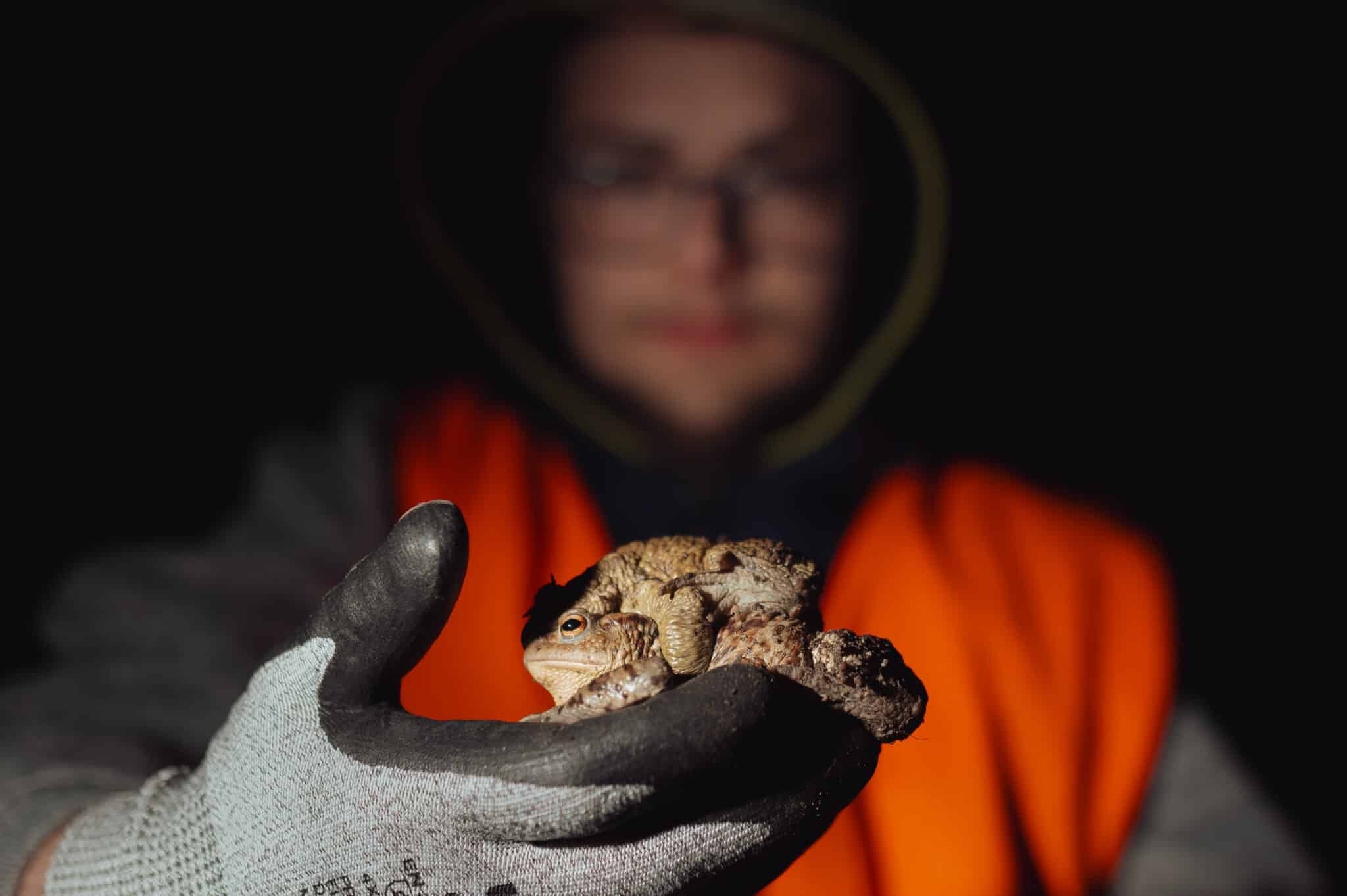Saving hundreds of migrating frogs from under the moving cars every day
The City Forests of Košice drew the attention of motorists weeks ago to the migrating frogs, which have already started their spring migration in recent days. As the toads are migrating from their wintering grounds to their breeding sites, including the Ružin reservoir, drivers are asked to be aware of the protected animals and the restrictions on the stretch of road. Activists assist the frogs in their migration by transporting them across the road in buckets after sunset.
The City Forests of Kosice, in cooperation with volunteer Ivana Fabianova and her team, started weeks ago to protect the migrating frogs, which are currently moving from their wintering grounds to their breeding grounds due to the unusually warm and early spring season.
According to Fabianova, the protection of the frogs migrating near the Ružin reservoir on the ground, consists mainly of the installation of plastic sheeting barriers along the roads crossing their migration routes.
“This mainly concerns the protection of toads in places close to water surfaces, such as the Ružn reservoir or small lakes near the village of Malá Lodina, where toads lay their eggs in a former trout hatchery. A few weeks ago, the installation of plastic barriers was completed along the road parallel to the reservoir, from Košická Belá almost to the Hotel Lesanka turn-off. The barriers preventing the frogs from crossing the road have been installed by the staff of the Municipal Forestry, while the collection of the frogs into buckets and their transport back and forth is carried out by activists and conservationists associated with us,” told us Fabianova on the spot, who also said that, depending on weather conditions, the frogs’ movements are monitored almost constantly and that frogs gathering along the barriers are collected and taken to the other side of the road to continue their journey towards the water.

Night job
The night collection and transfer of frogs is also carried out on sections where there are no barriers. “For safety reasons, it is important that drivers observe the temporary speed limit of 30 km/h on the affected stretches so that drivers can avoid any frogs that may stray onto the road, while at the same time not endangering the volunteers collecting the frogs. That said, it is also important to note that, while in previous years the speed limit was marked with temporary traffic signs at both ends of the stretch, this year these signs were somehow forgotten. Nevertheless, we ask for the patience and attention of drivers,” added Fabianova.
Repetative process
As Fabianova explained, frogs or toads breed in large ponds, drainage ditches, and lakes but live on land for most of their lives. They prefer slightly deeper water to breed in than our other native amphibians, and unlike great crested newts, they can tolerate the presence of fish.
“Every year in spring, adult toads migrate en masse from their hibernation site, often in woodland, to their breeding pond (which can be more than 1km away). After breeding, toads gradually return to their previous summer habitats to forage and will migrate to their hibernation site again in late autumn. For many years, toads may use the same route. Toads do not necessarily migrate along natural cover, such as hedgerows or rough grassland, and will often use bare ground or roads as an easier migration path. Toads emerge from hibernation slightly later than common frogs and migrate to ponds on mild evenings (5°C+), often during or after rain. They lay their spawn in strings, not clumps. Common toad tadpoles are black and may form shoals. Toadlets leave the pond in large numbers in early summer, frequently during or after heavy rain. Juvenile toads, like adults, have ‘warty’ dry skin and are usually a shade of grey, green, or brown. They can sometimes be very dark or brick-red. Terrestrial habitats used by toads include woodland and rough grassland. In gardens and other man-made areas, they can be found sheltering or hibernating under paving, decking, compost heaps, and log piles,” Fabianova concluded.
Vocabulary
| to draw attention to | felhívni a figyelmet valamire |
| toad | varangy |
| breeding | szaporodás |
| reservoir | víztározó |
| to be aware of | tudatában lenni valaminek |
| restriction | korlátozás |
| to assist | segítséget nyújtani |
| bucket | vödör |
| to consist of | állni valamiből |
| to surface | felszínre kerülni |
| egg | pete |
| former | korábbi |
| trout hatchery | pisztrángkeltető |
| parallel to | párhuzamosan |
| on the spot | a helyszínen |
| gathering | gyülekezés |
| for safety reasons | biztonsági okokból |
| nevertheless | mindazonáltal |
| drainage ditch | vízelvezető árok |
| amphibian | kétéltű |
| crested newt | gőte |
| hedgerow | sövény |
| spawn | ivadék |
| tadpole | ebihal |
| shoal | ingovány |
| habitat | élőhely |
| to shelter | menedéket keresni |


